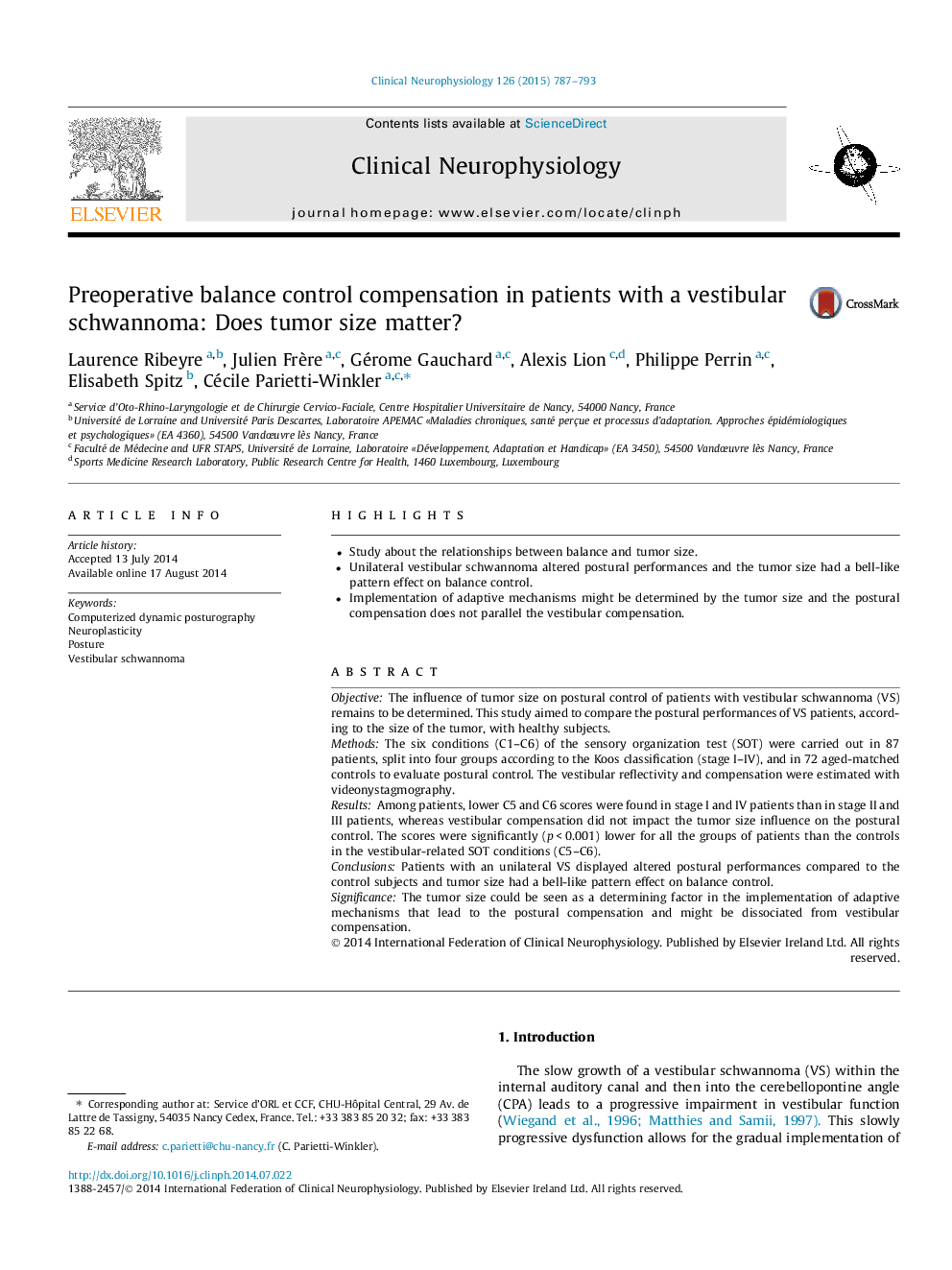| Article ID | Journal | Published Year | Pages | File Type |
|---|---|---|---|---|
| 3043008 | Clinical Neurophysiology | 2015 | 7 Pages |
•Study about the relationships between balance and tumor size.•Unilateral vestibular schwannoma altered postural performances and the tumor size had a bell-like pattern effect on balance control.•Implementation of adaptive mechanisms might be determined by the tumor size and the postural compensation does not parallel the vestibular compensation.
ObjectiveThe influence of tumor size on postural control of patients with vestibular schwannoma (VS) remains to be determined. This study aimed to compare the postural performances of VS patients, according to the size of the tumor, with healthy subjects.MethodsThe six conditions (C1–C6) of the sensory organization test (SOT) were carried out in 87 patients, split into four groups according to the Koos classification (stage I–IV), and in 72 aged-matched controls to evaluate postural control. The vestibular reflectivity and compensation were estimated with videonystagmography.ResultsAmong patients, lower C5 and C6 scores were found in stage I and IV patients than in stage II and III patients, whereas vestibular compensation did not impact the tumor size influence on the postural control. The scores were significantly (p < 0.001) lower for all the groups of patients than the controls in the vestibular-related SOT conditions (C5–C6).ConclusionsPatients with an unilateral VS displayed altered postural performances compared to the control subjects and tumor size had a bell-like pattern effect on balance control.SignificanceThe tumor size could be seen as a determining factor in the implementation of adaptive mechanisms that lead to the postural compensation and might be dissociated from vestibular compensation.
